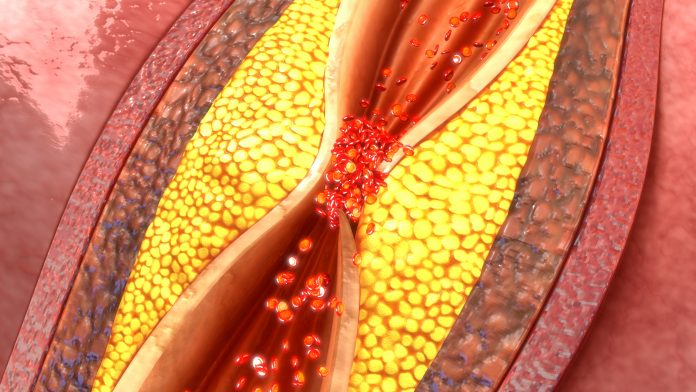
A team of researchers from the Vanderbilt University Medical Center, the Columbia University Irving Medical Center, and the Technical University Munich has found that smooth muscle cells lining the arteries of atherosclerosis patients can develop into other cell types with traits similar to cancer. These findings could pave the way for new ways of preventing and developing treatments for atherosclerosis.
In atherosclerosis, plaque—made up of fats, cholesterol, blood cells, and other substances—build up inside the arteries, narrowing them. As a result, the flow of blood carrying vital oxygen is reduced. Atherosclerosis is the main cause of cardiovascular disease, which, in turn, is the leading cause of death globally, according to the World Health Organization.
Finding and developing interventions for atherosclerosis is therefore essential.
Previous studies have shown that pathological activation of different cells—such as immune cells, endothelial cells, and smooth muscle cells—occurs in atherosclerosis. To understand this further, the research team, supported by the U.S. National Institutes of Health, studied the molecular mechanisms that cause the smooth muscle cells to develop into cancer-like cell types.
This process, known as phenotypic switching, was studied using molecular techniques in mouse models and tissue samples from atherosclerosis patients. The researchers found two hallmarks of cancer in the smooth muscle cells of atherosclerotic plaque: Compared to smooth muscle cells in healthy tissue, those in atherosclerotic plaque showed increased rates of DNA damage and genomic instability.
“Smooth muscle cell-derived cells in mouse and human atherosclerosis exhibit multiple tumor cell-like characteristics, including genomic instability, evasion of senescence, hyperproliferation, resistance to cell death, invasiveness, and activation of comprehensive cancer-associated gene regulatory networks,” described the researchers in their paper, published in the journal Circulation.
“This discovery opens up a whole new dimension for our understanding about therapeutic strategies for the prevention and treatment of atherosclerosis,” said Ahmed Hasan, program director in the division of cardiovascular sciences at the National Heart, Lung, and Blood Institute, part of NIH, in a press release.
“Previous research has suggested that atherosclerosis and cancer may share some similarities, but this association has not been fully described until now.”
The researchers also observed that cancer-associated genes were more active during the transition from healthy smooth muscle cells into those in atherosclerotic plaque. Moreover, phenotypic switching was accelerated and atherosclerosis worsened in a mouse model expressing a known cancer mutation.
To prove that there is indeed a link between atherosclerosis and cancer-like cell development, the researchers treated atherosclerotic mice with the anti-cancer drug niraparib, which targets DNA damage repair. They found that the drug showed potential for treating atherosclerosis.
“In fact, we saw that niraparib actually shrinks the atherosclerotic plaques in mice,” explained Huize Pan, first author of the study and assistant professor of medicine at Vanderbilt University Medical Center, in a press release.
The authors concluded: “Our findings demonstrate that atherosclerosis is a smooth muscle cell-driven tumor-like disease, advancing our understanding of its pathogenesis and opening prospects for innovative precision molecular strategies aimed at preventing and treating atherosclerotic cardiovascular disease.”













